
| Helena Emperor Moth (one synonym : Antheraea intermedia Lucas, 1890) SATURNIIDAE, BOMBYCOIDEA | (donherbisonevans@yahoo.com) and Stella Crossley |
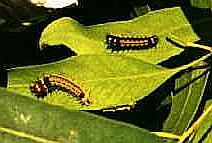
(Photo: courtesy of Miguel de Salas, Hobart, Tasmania)

| Helena Emperor Moth (one synonym : Antheraea intermedia Lucas, 1890) SATURNIIDAE, BOMBYCOIDEA | (donherbisonevans@yahoo.com) and Stella Crossley |

(Photo: courtesy of Miguel de Salas, Hobart, Tasmania)
Early instars of this Caterpillar are very pretty: they are pale brown with double white lines along the back and sides, paired yellow spots on the back, yellow scoli along each side, and seven black tubercles ringed in red : three pairs on the thorax and one on the tail.
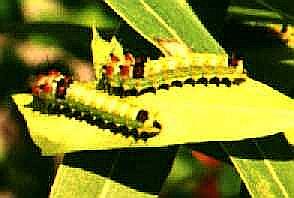
Later the ground colour becomes green, and they develop red tubercles on the thorax, and dark patches on the first and last abdominal segments.
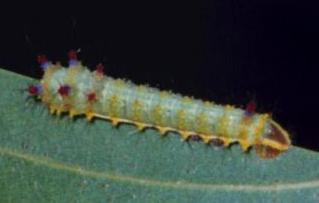 |
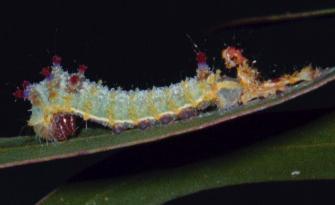 |
|
|
|
At this stage, when they feel threatened, they curl the head under, exposing the spines on the thorax.

The final instar of this caterpillar is green with a pale pink lateral stripe, red spiracular openings, and is covered in short white bristles. There are small paired spikes on the thorax and on the eighth abdominal segment. Later instars develop blue warts.
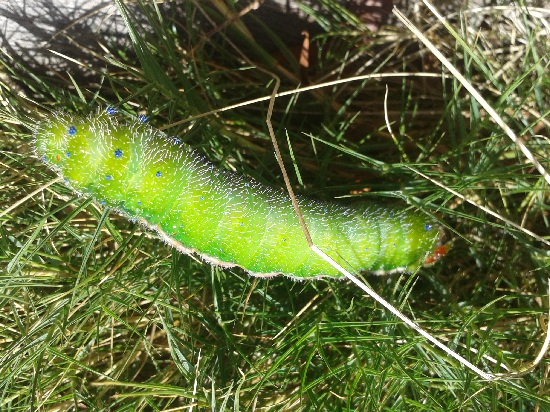
The caterpillar feeds in broad daylight on:
and has also been reportedly found on
However, in an experiment with newly hatched larvae, groups of five were placed in petri dishes with different food plants:
They refused to even nibble at any of them except Oak, on which that group started feeding immediately, and kept doing so. They were all later transferred to
as they grow better on their natural food plants. They grow to a length of about 8 cms.

The Caterpillar pupates in a hard cocoon between leaves or attached to the trunk of its food tree. Inside the cocoon is a brown pupa. The resting period of the pupa has been found to vary between three weeks and two years.
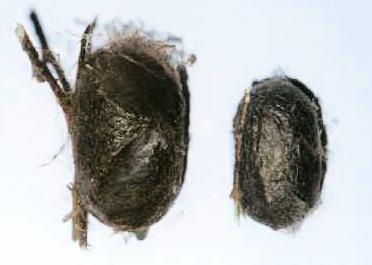
The female cocoon has a length of about 4 cms. The male has a length of about 3 cms.
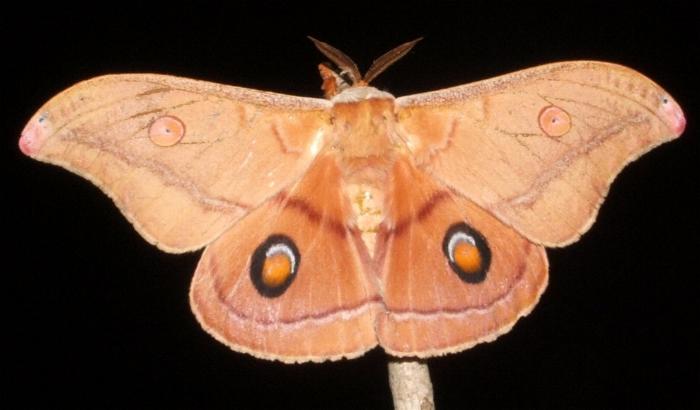
The adult moth is brown with wrinkled wingtips, and a single brown eyespot in the middle of each forewing, spaced away from a dark-edged broad pale wavy submarginal line. The hind wings also each have an eyespot which is much more spectacular.
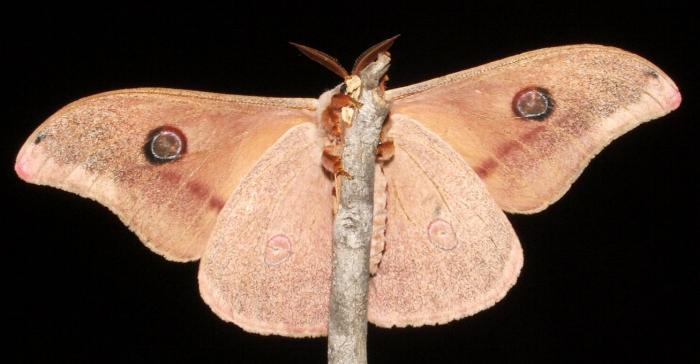
If disturbed, a resting moth will deflect its head and body, incline its wings forwards displaying its hind eyespots, and rhythmically raise and lower its wings. The moths have a wingspan from 13 to 17 cms. One female we reared was so laden with eggs that she could not fly.
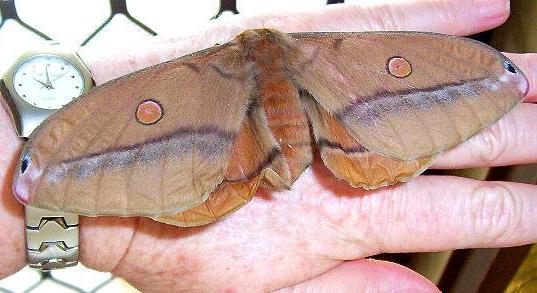
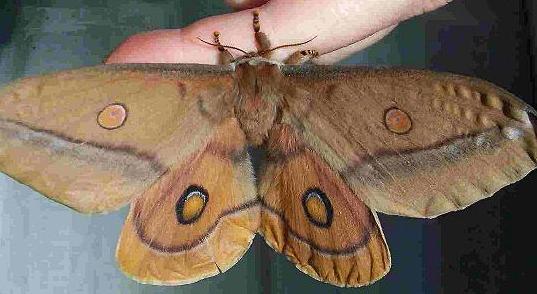
The species has been found in southern Australia in

The eggs are off-white flattened ovals, each with a length of about 2 mm. They are laid on the leaf of a foodplant in close-packed arrays sometimes of 20 or more.
This species was moved from the genus Opodiphthera to Austrocaligula by Brechlin in 2005, and many Taxonomists disagree with this reassignment. Here, we follow the Australian Faunal Directory.
Further reading :
Ronald Brechlin,
Einige Anmerkungen zur Gattung Neodiphthera Fletcher, 1982 stat. rev.
mit Beschreibung von vier neuen Arten (Lepidoptera: Saturniidae),
Nachrichten des Entomologischen Vereins Apollo,
N.F. 26 , Parts 1/2 (2005), pp. 17–29.
Ian F.B. Common,
Moths of Australia,
Melbourne University Press, 1990, pls. 15.3, 28.10, pp. 34, 405-406,
(listed as Opodiphthera helena)
Densey Clyne,
Emperor's New Clothes,
Butterfly and Other Invertebrates Club Inc.
Metamorphosis Australia,
Issue 72, March 2014, pp. 1, 4-7.
Pat and Mike Coupar,
Flying Colours,
New South Wales University Press, Sydney 1992, p. 86,
(listed as Opodiphthera helena)
Peter Hendry,
Saturniidae,
Butterfly and Other Invertebrates Club Inc.
Metamorphosis Australia,
Issue 51, December 2008, pp. 27-29.
Peter B. McQuillan, Jan A. Forrest, David Keane, & Roger Grund,
Caterpillars, moths, and their plants of Southern Australia,
Butterfly Conservation South Australia Inc., Adelaide (2019), pp. 4-5, 10, 98-99.
Peter Marriott,
Moths of Victoria - Part 1,
Silk Moths and Allies - BOMBYCOIDEA,
Entomological Society of Victoria, 2008, pp. 26-27.
Adam White,
Descriptions of apparently new species and varieties of
insects and other annulosa, principally from the
collection in the British Museum,
Annals and Magazine of Natural History,
Volume 12 (1843), p. 344.
Paul Zborowski and Ted Edwards,
A Guide to Australian Moths,
CSIRO Publishing, 2007, p. 163.
 caterpillar |  butterflies |  Lepidoptera |  moths |  caterpillar |
(updated 30 March 2013, 13 October 2025)